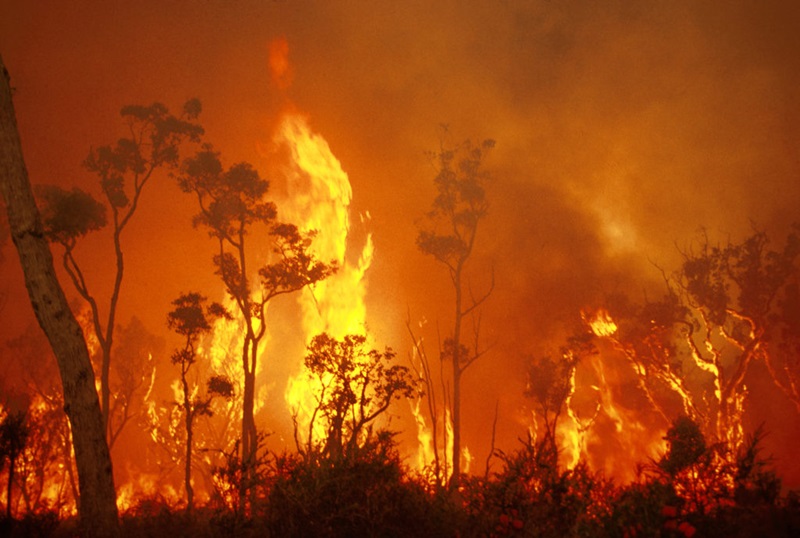BMP Insights: Secret Elements and Advantages of a Bushfire Management Plan
BMP Insights: Secret Elements and Advantages of a Bushfire Management Plan
Blog Article
The Relevance of Bushfire Management in Fire Protection
In the realm of fire protection, the value of efficient bushfire management can not be understated. As areas around the world face enhancing instances of wildfires, the proactive strategy to stop and reducing these all-natural disasters through strategic bushfire monitoring methods has arised as a vital element. Beyond the prompt hazard to human life and residential property, the interaction in between bushfire monitoring and ecological preservation, area involvement, and climate modification positions complex challenges that demand comprehensive remedies.
Relevance of Proactive Bushfire Prevention
Positive bushfire avoidance approaches are necessary in mitigating the ruining impacts of wildfires on ecosystems and neighborhoods. One vital aspect of proactive bushfire avoidance is gas management.
Enlightening the public on fire safety and security practices and advertising community awareness about the relevance of bushfire prevention are essential components of positive techniques. Ultimately, aggressive bushfire prevention plays a considerable duty in securing communities and ecological communities from the destructive effects of wildfires.
Duty of Community Involvement in Fire Protection
Involving the area in fire defense efforts is important to boosting the effectiveness of positive bushfire avoidance techniques. Area interaction plays a crucial function in cultivating a cumulative understanding of the dangers presented by bushfires and the significance of preparedness steps. By including neighborhood homeowners, authorities can share important info ablaze security practices, emptying procedures, and very early warning systems, empowering people to take aggressive actions to safeguard their properties and lives.
Furthermore, area involvement efforts help construct resilience within areas, promoting a sense of unity and shared obligation in mitigating fire dangers. With workshops, training sessions, and community events, residents can find out exactly how to develop defensible areas around their homes, lower fire gas lots, and determine prospective hazards. By cultivating a society of readiness and cooperation, neighborhoods can reinforce their ability to respond effectively to bushfire emergency situations, decreasing the effect on buildings and lives. Ultimately, area involvement is a foundation of thorough fire protection strategies, highlighting the value of collective activity in securing at risk areas from the risk of bushfires.
Value of Wildlife Conservation in Bushfire Administration
Conservation of wild animals plays an essential duty in efficient bushfire monitoring techniques, making sure the defense of diverse ecological communities and biodiversity in fire-prone regions. Wild animals conservation is essential as it adds to the overall resilience of ecosystems, assisting in their capability to recover and endure from the influence of bushfires. By conserving habitats and safeguarding different types, the natural equilibrium within these ecosystems is maintained, which is vital for their long-lasting wellness and sustainability.
Moreover, wildlife preservation also helps in lowering the threat and strength of bushfires. Healthy communities with unspoiled wild animals populations can act as natural firebreaks, decreasing the spread of fires and limiting their devastating capacity (Bushfire Risk). Certain animal varieties, like burrowing pets or birds that spread seeds, play one-of-a-kind roles in aiding or protecting against fires in the post-fire regrowth of environments
Including wild animals preservation into bushfire administration techniques is not only necessary for guarding biodiversity but additionally for promoting the general health and wellness and strength of communities when faced with boosting fire hazards.
Benefits of Strategic Gas Reduction Programs
Purposefully implementing gas decrease programs is necessary in minimizing the threat and effect of bushfires in fire-prone regions. These programs include regulated burning, mechanical clearing up, and various other approaches to minimize the amount of flammable plant life offered to fuel wildfires. By purposefully decreasing gas lots in key areas, such as close to household neighborhoods or vital framework, the intensity and spread of bushfires can be significantly decreased.
One of the primary advantages of fuel reduction programs is the enhancement of total fire durability in an environment. By producing critical fuel breaks and minimizing the connection of plant life, these programs help to interrupt the path of a bushfire, making it easier for firemans to extinguish the blaze and consist of. Furthermore, fuel decrease programs can secure biodiversity by stopping excessively intense fires that can ravage habitats and threaten wildlife populations.
Moreover, these programs can likewise safeguard human lives and building by decreasing the risk of catastrophic fires that posture a significant danger to areas. Ultimately, strategic fuel reduction programs play a vital role in proactive bushfire management and fostering a safer environment for both people and nature.
Influence of Climate Adjustment on Bushfire Risk

Greater temperature levels lead to drier vegetation, making it a lot more prone to ignition. Lowered rainfall in certain areas lengthens drought problems, better boosting the flammability of the landscape. Additionally, the transforming climate has altered wind patterns and atmospheric conditions, leading to even more unpredictable fire actions and fast fire spread.
As the environment remains to alter, the frequency and intensity of bushfires are expected to climb, necessitating a positive and flexible approach to bushfire administration. Techniques should advance to make up the altering risk landscape, including environment estimates and considering long-lasting strength in fire management preparation. Attending to the impact of climate adjustment on bushfire threat is critical in creating effective techniques to safeguard lives, property, and the setting.
Verdict
In final thought, positive bushfire avoidance, neighborhood involvement, wildlife preservation, strategic fuel decrease programs, and consideration of climate change are vital components in efficient fire defense. By applying these strategies, we can better handle bushfire risks and safeguard both human lives and the atmosphere. Bushfire Risk. It is necessary that stakeholders collaborate to focus on these actions to decrease the terrible influence of bushfires on neighborhoods and ecosystems

As the environment continues to transform, the frequency and intensity of bushfires are anticipated to increase, requiring a adaptive and positive technique to bushfire administration.In final thought, proactive bushfire prevention, area interaction, wildlife preservation, critical fuel reduction programs, and factor to consider of climate adjustment are critical elements in efficient fire security.
Report this page